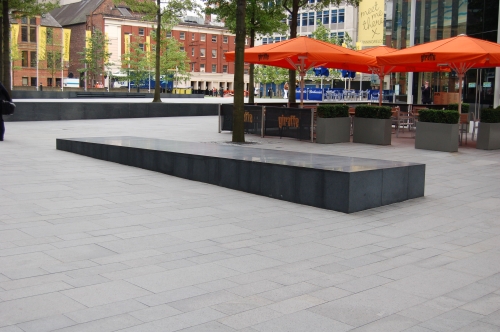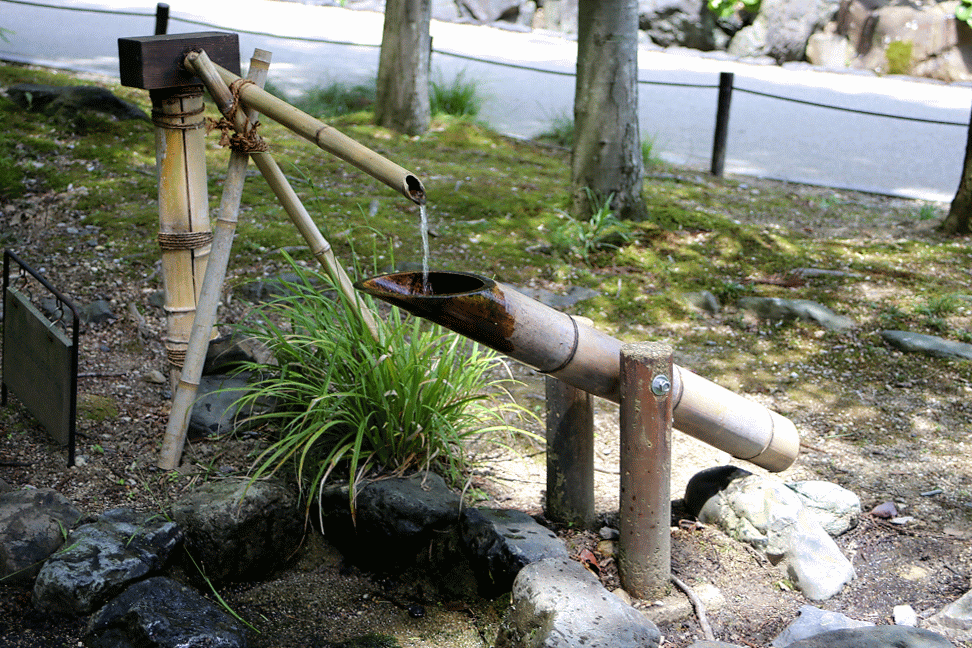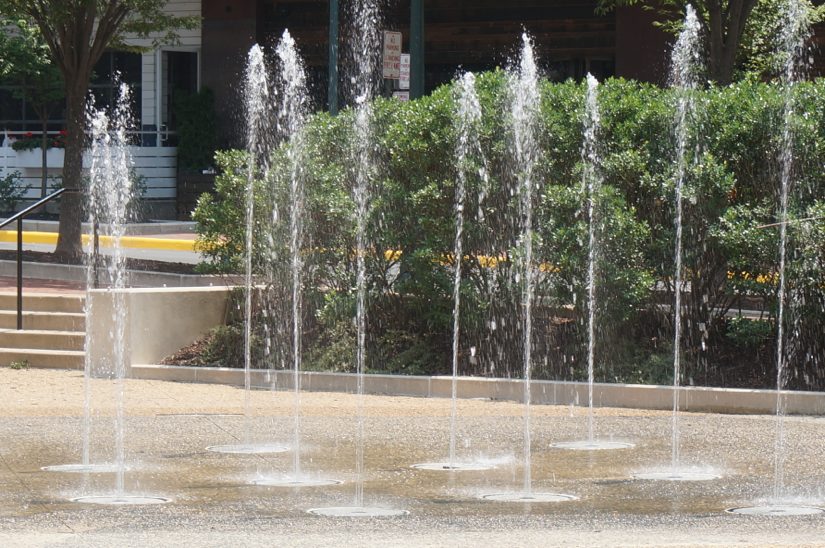Water feature
Contents |
[edit] Introduction
A water feature can be defined as a decorative or recreational component of a garden, landscape or urban area that incorporates some aspect of water.
[edit] History
In some Ancient cultures, water features were constructed in homes and gardens that were built in hot climates. In Greece and Italy, pools or fountains were sometimes placed in open entrance halls in front of the home or in enclosed atriums within the home.
|
Built in the 1700s, the cascades of the Royal Palace of Caserta stretch over two kilometres and include a series of five elaborate Baroque style fountains. The architecture and hydraulics were designed by Luigi Vanvitelli. |
These early water features were powered by several different means, including:
- Gravity and air pressure.
- Hydraulic ram or hydram (a type of hydraulic powered pump).
- Human or animal labour.
With the Industrial Revolution in the 1800s, steam engines were sometimes used to power water features.
[edit] Water feature requirements
Modern structures tend to rely on artificially supplied water and are primarily human-made. Water supply does not need to come from the mains water; some water features incorporate natural supplies from groundwater, rainwater and stormwater runoff.
Water is generally held in an underground or hidden reservoir (sometimes referred to as a sump) and pumped to the water feature. Water may be recirculated once it enters the supply.
Modern devices often require a source of power. This can be mains power or solar or wind power.
[edit] Purpose
Water features may be referred to as water gardens or aquatic gardens when the water feature serves as the primary point of interest within the garden. In addition to aesthetic and recreational purposes, the moving water sometimes performs a secondary irrigation purpose.
Water features may be incorporated into a wide variety of landscape design projects - from parks and green spaces, to gardens, sports sites and large estates such as housing developments, business parks, universities, hospital complexes and so on.
In some urban environments, their purpose may be to create the impression of a more tranquil environment through the production of natural sounds that may help mask unpleasant noises, or increase privacy.
Water features may also be used as an aspect of biophilic design, which attempts to connect people to nature and natural processes. This connection can be made by introducing visual interaction with the 'natural' world outside - perhaps in a courtyard with a water feature and plants.
Water features may be used inside buildings to enhance the visual and acoustic environment.
Water features may also be used to help attract and support certain forms of wildlife. They may also increase humidity in dry regions and help improve air quality.
In Japan, water features can play several important roles. Water can be used to represent renewal through spiritual cleansing and can promote a sense of calm. These water features are generally designed simply with water trickling from a spout into a basin which is often made of stone and surrounded by vegetation. In some gardens, the sound of moving water - in the form of waterfalls or fountains - may serve as a backdrop to meditation.
|
This shishiodoshi is in the Higashiyama Botanical Garden. |
Some Japanese water features - such as the shishiodoshi - perform the opposite function by disrupting the sense of calm. These devices (generally referred to as deer scarers) use the movement of water through a series of weighted bamboo segments to trigger sounds that frighten - rather than attract - unwelcome wildlife (such as deer) from the garden.
[edit] Types of water features
There are small and large scale types of water features.
|
Some smaller water features, such as this aquatic sculpture, can be installed indoors. |
Small water features may be suitable for tabletops or balconies. These come in several forms, including:
- Water spheres.
- Small stone fountains or monoliths.
- Figurines with cascading water elements.
- Self-contained natural scenes.
There are many types of large scale water features:
- Artificial ponds (including habitat ponds), lakes, reflecting pools and lotus pools.
- Grottoes.
- Follies.
- Bird baths.
- Waterfalls, cascades or streams.
- Fountains (including hanging wall fountains, splash fountains, singing and dancing fountains and jeux d'eau fountains).
- Steel or mosaic water walls.
- Spas.
|
Splash fountains, also known as bathing fountains, are often found in urban public spaces. They are designed to be easily accessible and encourage interaction such as children playing or people cooling off on hot days. |
[edit] Related articles on Designing Buildings
Featured articles and news
Moisture, fire safety and emerging trends in living walls
How wet is your wall?
Current policy explained and newly published consultation by the UK and Welsh Governments.
British architecture 1919–39. Book review.
Conservation of listed prefabs in Moseley.
Energy industry calls for urgent reform.
Heritage staff wellbeing at work survey.
A five minute introduction.
50th Golden anniversary ECA Edmundson apprentice award
Showcasing the very best electrotechnical and engineering services for half a century.
Welsh government consults on HRBs and reg changes
Seeking feedback on a new regulatory regime and a broad range of issues.
CIOB Client Guide (2nd edition) March 2025
Free download covering statutory dutyholder roles under the Building Safety Act and much more.
AI and automation in 3D modelling and spatial design
Can almost half of design development tasks be automated?
Minister quizzed, as responsibility transfers to MHCLG and BSR publishes new building control guidance.
UK environmental regulations reform 2025
Amid wider new approaches to ensure regulators and regulation support growth.
The maintenance challenge of tenements.
BSRIA Statutory Compliance Inspection Checklist
BG80/2025 now significantly updated to include requirements related to important changes in legislation.
Shortlist for the 2025 Roofscape Design Awards
Talent and innovation showcase announcement from the trussed rafter industry.




























